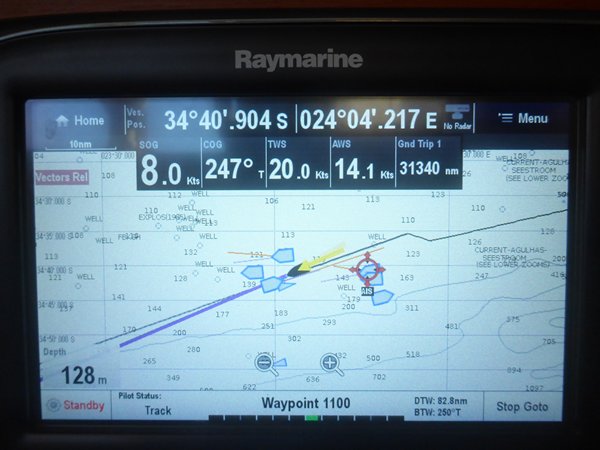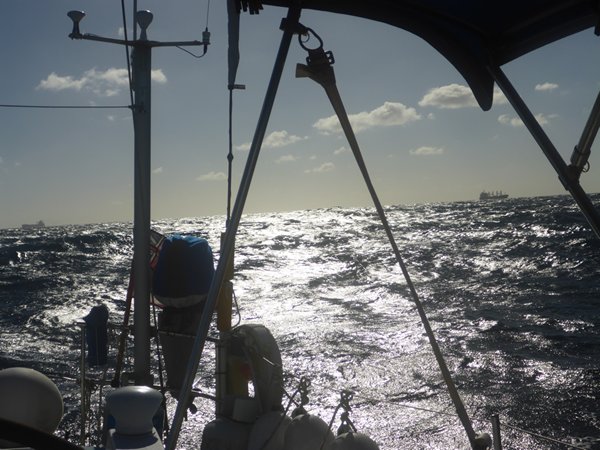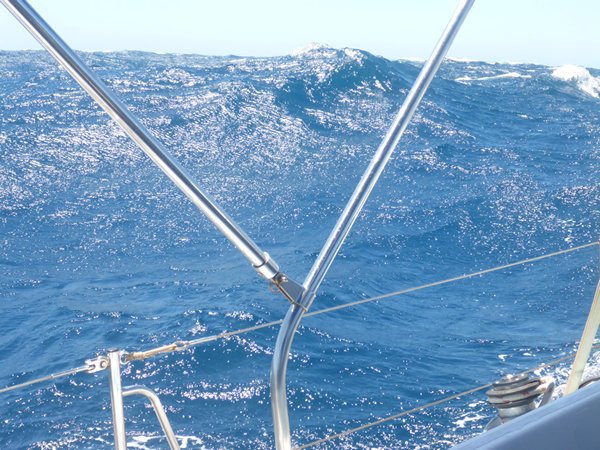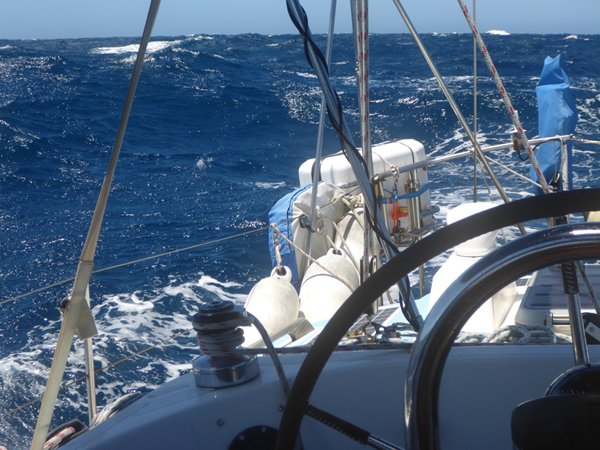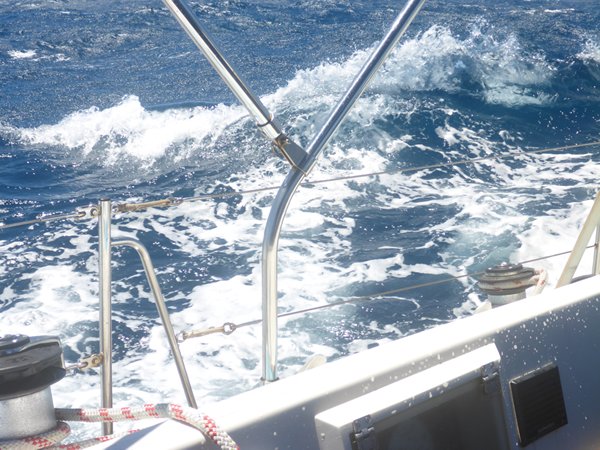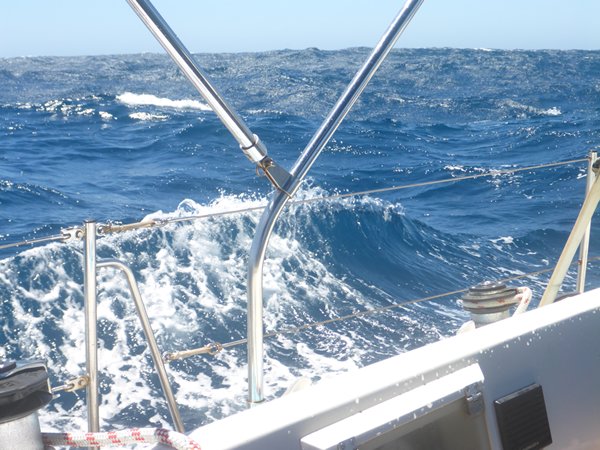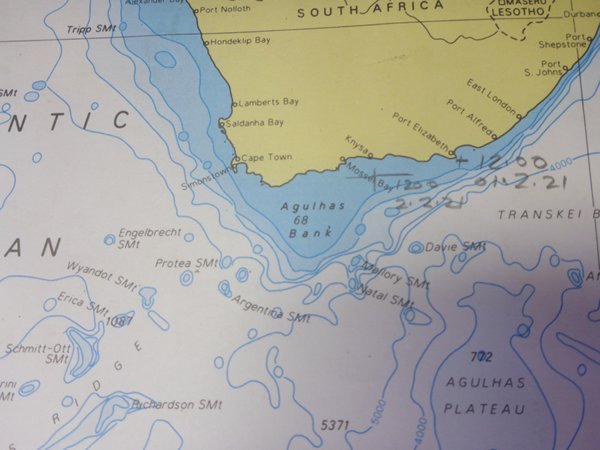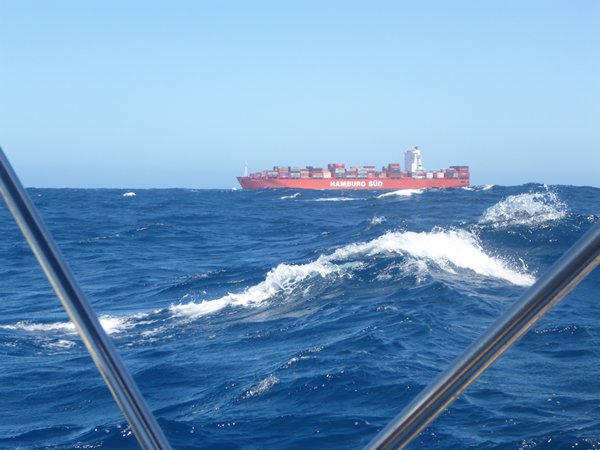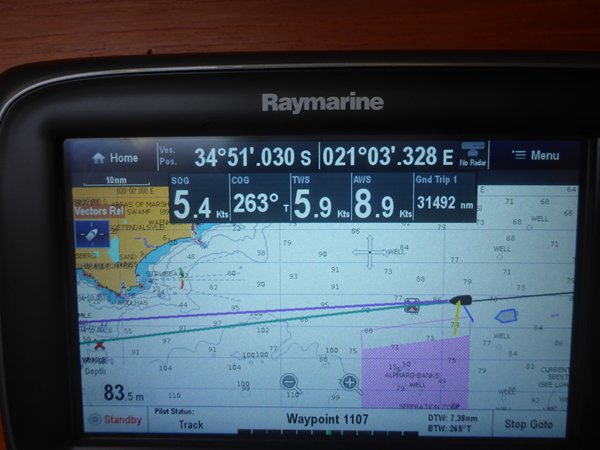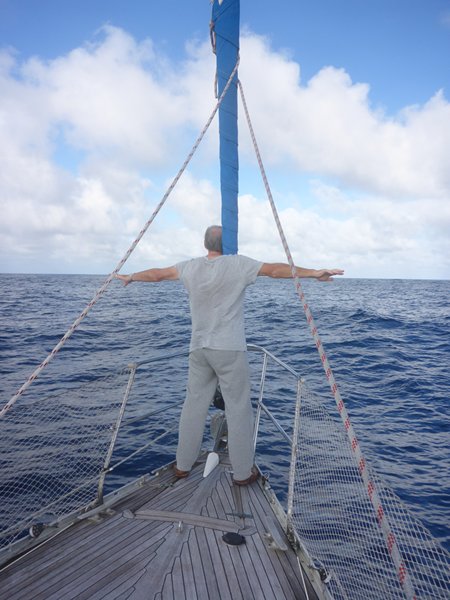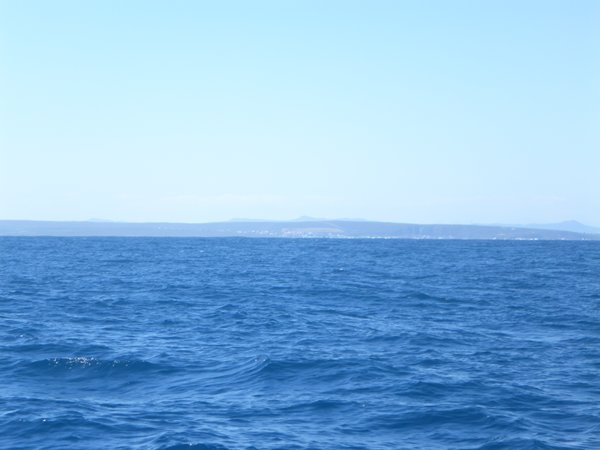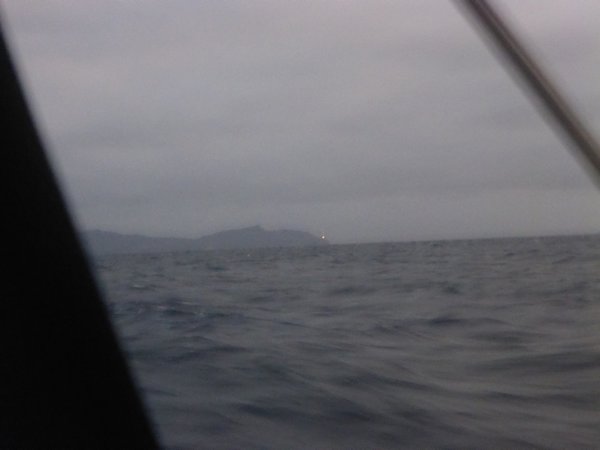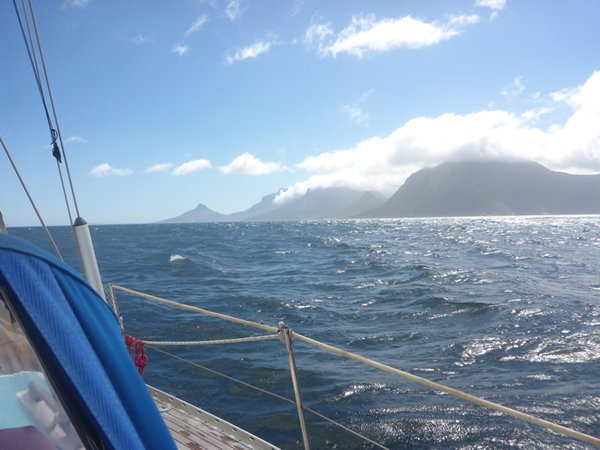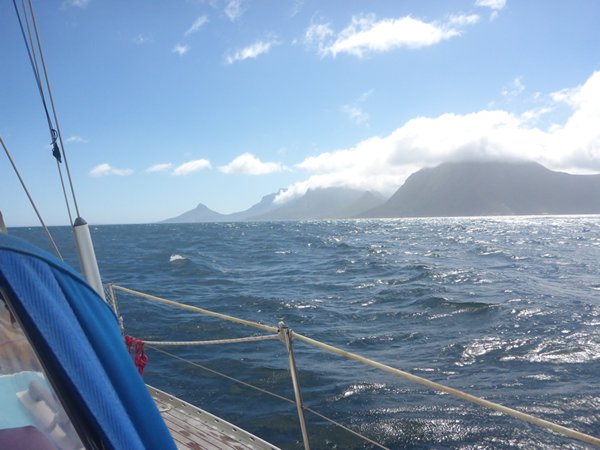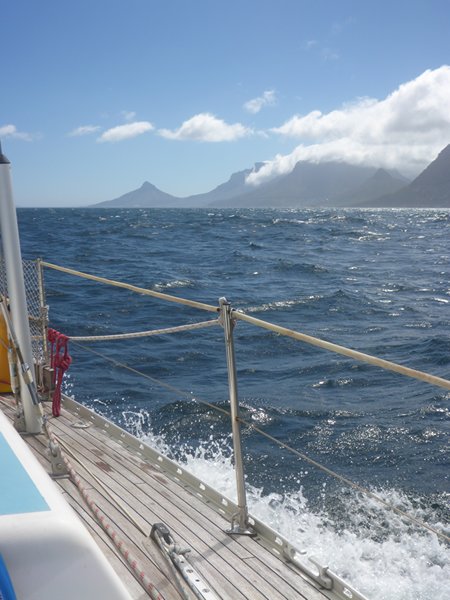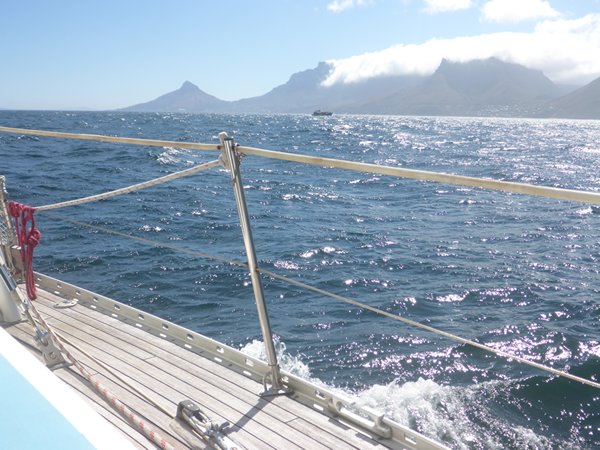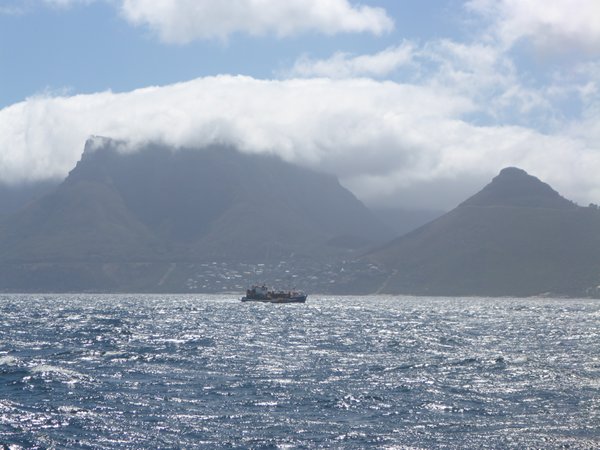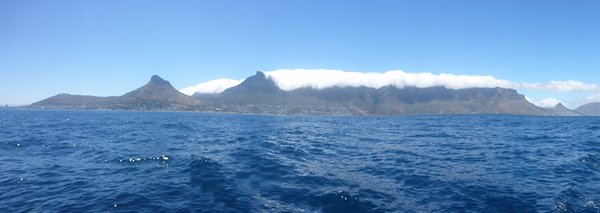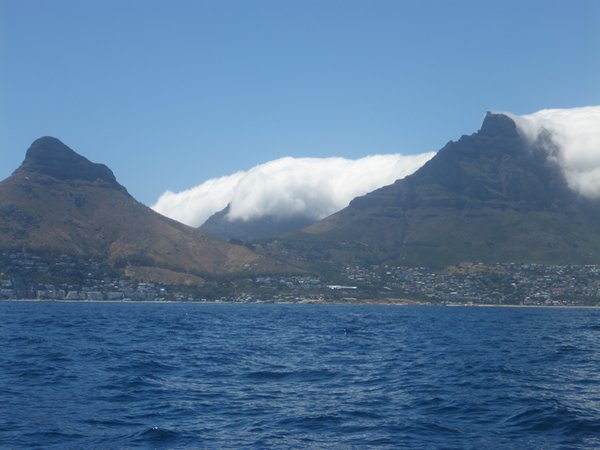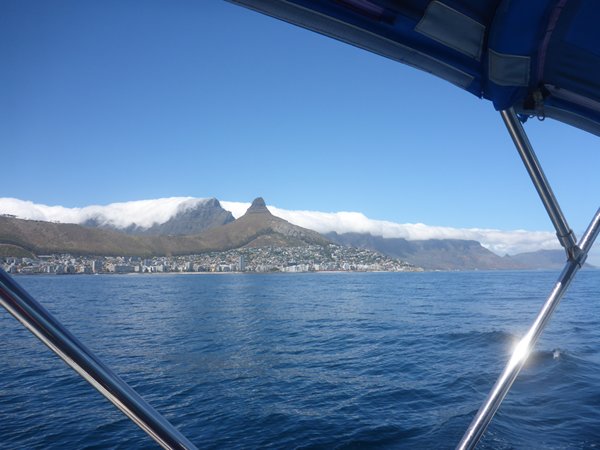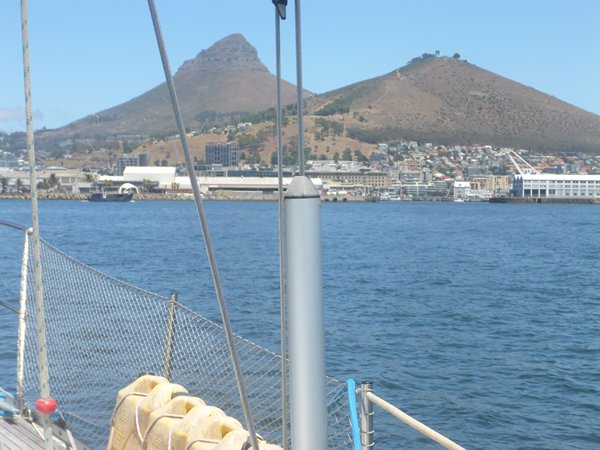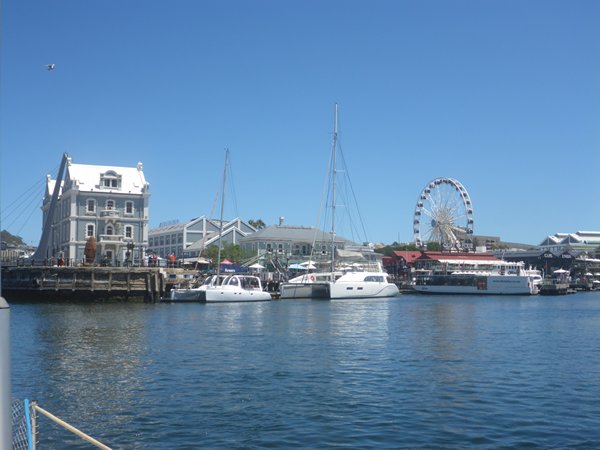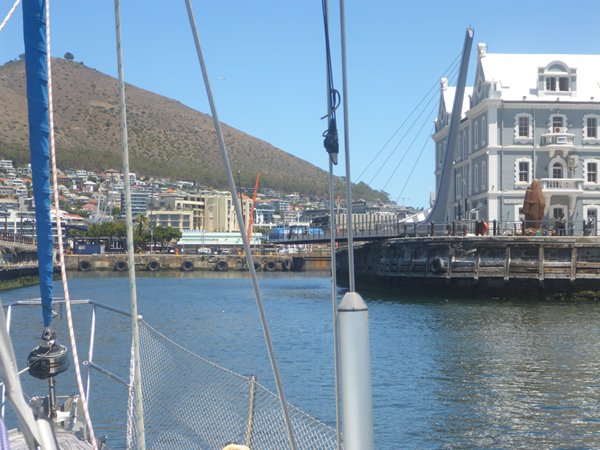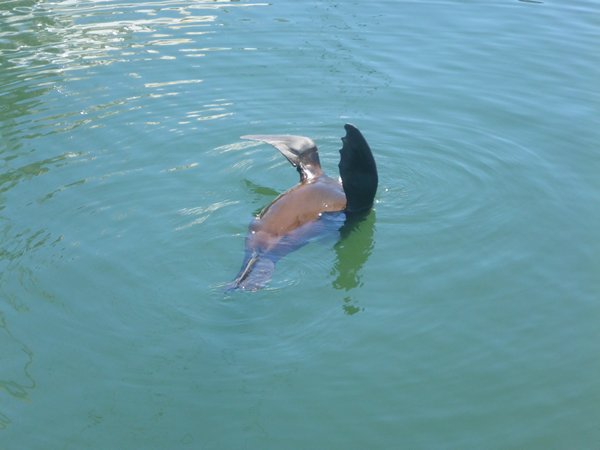2021 SA Where Three Oceans Meet

|
33:54.52S 18:25.06E Where Three Oceans Meet We were only at sea for a few minutes, out of Port Elizabeth on another sunny day when we passed seven Jackass Penguins swimming in a closely huddled group. There wasn’t much wind but Rob poled out the genoa and with that sail pulling and the Agulhas Current helping, as soon as we left port we managed a respectable 5.3 knots with the engine turned off. Our weather window was holding and appeared to extend for at least a week from the first of February, the day we left. As I type this in the V & A Marina in Cape Town it is the seventh and the wind would be against us now, but even so a six day weather window is the longest yet by far. We had been warned about the numerous ships we would come across on this busy route around the Capes and soon we were caught up in the crowd coming towards us and diverging around us as they approached from behind. Why aren’t there any shipping lanes around here like in the English ChanneI I wondered? Then there were the fishing boats, oblivious to everything except their task in hand, as usual. On the chart plotter their heading changes were as erratic as a roach in a petri dish. For the first time ever a ship actually called us and the officer explained the action he was going to take to pass down our starboard side as he overtook. Impressive; both considerate and professional. I called up the orange ship from the Hamburg Sud line, the Santa Ursula to confirm he was going to pass to our stern as he approached from ahead. I thought a gap of 1.4 miles was infinitely better that .4 miles the heading he was on at the time; especially in the short, roly swell we were experiencing. At midday on the second day and date we turned west for Cape Town 281 miles away and we knew we were in for a blow, just hoping we would be able to make use of it. Time came to slide the main into the mast because its role as a steadying sail were being challenged by the building sea which, in advance of the blow that was coming, threatened to push her sideways and we didn’t want that. The risk of a broach eliminated we all felt more comfortable, Zoonie included and the genoa was free to do its job of pulling us along.
At 01.38 in the night of the second we were sitting on deck under silvery moonlight and the deck light beam trying to figure out in what order to connect the lines to the genoa pole now we had changed course and the wind backed across our stern. The pole rigged to starboard we could remember the order, but the opposite was posing a ridiculous challenge. Were we suffering from Covid muzzy headedness maybe? Any way we worked it out between us and it rose to the horizontal without a hitch. The wind was rising and the sea was in the same mood and within a few hours Zoonie was belting along with a reefed headsail in winds between 22 and 29 knots, relishing the freedom to do 8 knots at times without need of the engine. This blissful boost lasted fifteen hours. Suddenly, as daylight arrived, we were passing pairs of big pink buoys in a line at 50 metre intervals no more than 15 metres from us. A deadly drift net, harbinger of death to marine life whether suited in scales or feathers and deadly for us had we got caught up in it and even worse if our engine had been on. In the night you just cannot see them; so how had we been fortunate enough to miss them? How much longer would our luck hold out as far as a fouled propellor was concerned? This is another reason I prefer open ocean sailing, and sailing to motoring. The beautiful Agulhas Current was still with us. The night after the blessed wind left us was damp; everything in the cockpit shone with moisture under silver moonlight. Droplets clung on to the underside of the bimini, we could feel the chill damp on our skin and everything below soaked up some of the moisture. We were in the area where three oceans meet. Leaving behind us the temperamental Indian Ocean with the kindly to us Southern Ocean to port and the Atlantic ahead; our home ocean. Des suggested we head for the gap between the Six Mile Bank and the Twelve Mile Bank, where the majority of the ships go. Ooh that could be a squeeze I thought. A baby buster was expected off Cape Agulhas tomorrow, the most southerly cape of the continent, so we were hoping we would have made the turn north before then and receive it as a beam wind boosting us on. I worried there was no phosphorescence/luminescence in this cool water where there should be lots of nutritious food for the sea creatures. Just after midnight I noticed the enormous, orange, waning, gibbous moon had risen astern of us in between the windcharger pole and the communication mast. Gibbous because its illuminated, visible area was between full moon and half moon and I like the word! The third day and date dawned cloudless again but with little wind, so the iron topsail was full and pulling. A seal arched out of the water to see us, all of 20 miles offshore and a juvenile yellow nosed albatross came to take a look at us. I had thought we would not see any more albatross so this was a pleasure. I realised how fortunate we were because modern fishing techniques are causing a catastrophic decline in these magnificent ocean wanderers. At 13.50 we sighted Cape Agulhas 20 miles away; would we lose the current there we wondered? It is the insignificant band of low land in the very blue photo. Melting ice cube clouds spotted the sky at low level and the Cape of Good Hope was not far away, around the corner. The ships were now heading directly for the west bound separation lane to the north of the Agulhas Gas Field, the oncoming ships in the eastbound lane to the south of the field. So we drew a course just out of the westbound lane and felt a lot more comfortable. I feel a nuisance expecting these leviathans to alter course for us, but I guess it is just normal in their line of work. If we have the engine on then we are a power- driven vessel just like them and so the rule of overtaking vessel keep clear applies. Technically, because we have an engine installed, even if it is not running, we can still be classed as a power- driven vessel if pushed into a court of law after an incident I have read. We passed The Cape of Good Hope in my 4 to 7 watch, its bright white flashing light the only sparkle in an otherwise ceiling to floor grey. But soon the blue sky grew with the morning and as you can see and as Des told us, the beautiful scenery is there to be enjoyed. Between a rock and hard place, literally, we made a course 3 miles from the shore, mostly on the 200 metre contour to avoid the craypots laid on the rocks just off the coastline and not so far out to cause a nuisance to the ships. The boat you see with the mountain backdrop is laden with hundreds of the pots. It is a lucrative export market. Zoonie was cruising gently along under poled out genoa, the engine off briefly. As we approached where the skyscrapers sat on the headland and we were passing houses creeping from the shore up the mountain slopes we knew this testing trip was nearly over. Robben Island, where Nelson Mandela was imprisoned for 18 of his 27 years of captivity, appeared low on our port bow and as we motored nearer I was by strange coincidence reading on my BBC phone app about the 1700 Cape Cormorant chicks on Robben Island rescued from the onslaught of kelp gulls and ibises as they sat in their nests awaiting their parents who never returned from their fishing forays. This happened on the 11th January at the beginning of our quarantine period. A week later another 173 were rescued in the same way from another island. What tragedy had befallen the parent birds? Were they trapped in a deadly freshly laid net, they spread for miles? Did a supertrawler pass through in the hours of darkness and take almost all of the sardine and anchovy shoal the parent birds were fishing from? Without doubt the cause was man. Both the numbers of birds and fish have been in decline for decades. Local hotels and residents have contributed over one thousand beach towels to provide soft beds for the chicks as they recover in the South Africa Foundation for the Conservation of Coastal Birds base. The chicks are endangered but at least these are being given a helping hand. Two bridges opened to allow us into the inner lagoon right in the city centre and Weitz and a marina attendant took our lines at 13.00hrs on the 4th Feb. We had arrived and are now in our last ocean, free to head north, eventually.
|
